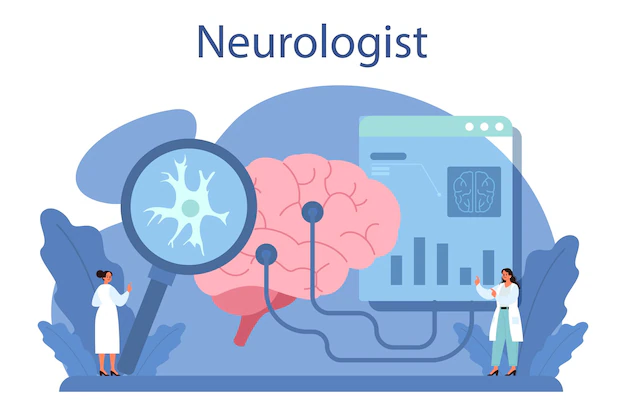Unveiling Vitiligo 4 Causes, Symptoms, Treatment Options and How to Take Care of Your Child with Vertiligo

Vitiligo is a skin condition characterized by the loss of pigment, resulting in white patches on the skin. While not physically harmful, vitiligo can have significant psychological and emotional effects on those affected. In this article, we will delve into the causes, symptoms, and treatment options for vitiligo, shedding light on this often misunderstood condition.

Page Contents
- 1 Unveiling Vitiligo 4 Causes, Symptoms, Treatment Options and How to Take Care of Your Child with Vertiligo
- 2 Symptoms of Vitiligo
- 3 2 Types of Vitiligo
- 4 Why does Vitiligo cause Melatonin Loss
- 5 Let’s delve into how autoimmune disorders are linked to vitiligo.
- 6 5 Diagnosis and Treatment
- 7 How to Take Care of Your Child with Vertiligo
- 8 Living with Vitiligo
Unveiling Vitiligo 4 Causes, Symptoms, Treatment Options and How to Take Care of Your Child with Vertiligo
What Causes Vitiligo?
The exact cause of vitiligo is still not fully understood, but it is believed to be an autoimmune disorder in which the body’s immune system mistakenly attacks and destroys melanocytes, the cells responsible for producing pigment in the skin. Several factors may contribute to the development of vitiligo, including genetic predisposition, melanin loss, environmental triggers, and autoimmune disorders.
Symptoms of Vitiligo
The primary symptom of vitiligo is the appearance of white patches on the skin, which may vary in size and location. These patches often start small and gradually enlarge over time, affecting any part of the body, including the face, hands, arms, feet, and genital area. The borders of the patches may be well-defined or irregular, and the hair in the affected areas may also turn white.
2 Types of Vitiligo
There are different types of vitiligo, classified based on the pattern and distribution of the white patches:
- Non-Segmental Vitiligo: This is the most common type, characterized by symmetrical patches that occur on both sides of the body. Non-segmental vitiligo can further be classified into focal, mucosal, segmental, and generalized types, depending on the extent and distribution of the patches.
- Segmental Vitiligo: This type of vitiligo tends to develop at a younger age and is characterized by patches that are localized to one side or segment of the body. Segmental vitiligo may progress more rapidly than non-segmental vitiligo but is often more stable once it reaches a certain stage.


Why does Vitiligo cause Melatonin Loss
Vitiligo doesn’t directly cause melatonin loss. Melatonin is a hormone produced by the pineal gland in the brain and is primarily involved in regulating sleep-wake cycles. Vitiligo, on the other hand, is a condition characterized by the loss of skin color due to the destruction of melanocytes, the cells that produce melanin, the pigment responsible for skin color.
However, there might be an indirect connection between vitiligo and melatonin levels. Some studies suggest that individuals with vitiligo may have alterations in their neuroendocrine system, including changes in melatonin production or regulation. Melatonin levels could be affected by factors such as stress, which is known to influence both vitiligo and melatonin secretion. Additionally, some treatments for vitiligo, such as phototherapy, can affect melatonin levels due to their impact on the circadian rhythm.
In summary, while vitiligo itself doesn’t directly cause melatonin loss, there may be complex interactions between vitiligo and the hormonal system, including melatonin regulation, which warrants further research.
Let’s delve into how autoimmune disorders are linked to vitiligo.
Vitiligo is considered an autoimmune disorder, meaning that the immune system mistakenly targets and attacks healthy cells in the body. In the case of vitiligo, the immune system attacks melanocytes, the cells responsible for producing melanin, the pigment that gives skin its color. This autoimmune reaction results in the destruction or dysfunction of melanocytes, leading to the loss of pigment in the affected areas of the skin.
The exact cause of autoimmune disorders like vitiligo is not fully understood, but it is believed to involve a combination of genetic, environmental, and immunological factors. Here’s how autoimmune mechanisms are thought to contribute to the development of vitiligo:
- Genetic predisposition: There is evidence to suggest that certain genetic factors predispose individuals to autoimmune disorders like vitiligo. Specific genes associated with the immune system regulation and melanocyte function may increase the risk of developing vitiligo.
- Autoimmune response: In autoimmune disorders, including vitiligo, the immune system mistakenly identifies the body’s own tissues or cells as foreign invaders and launches an immune response against them. In the case of vitiligo, melanocytes become the target of this autoimmune attack. The exact trigger for this response is still unclear, but it is thought to involve a combination of genetic susceptibility and environmental factors, such as oxidative stress, hormonal changes, or exposure to certain chemicals.
- Immunological factors: Research suggests that abnormalities in the immune system, such as imbalances in the production of certain immune cells or signaling molecules, may contribute to the development of autoimmune disorders like vitiligo. For example, an imbalance in the activity of T cells, a type of white blood cell involved in immune responses, may play a role in the destruction of melanocytes in vitiligo.
- Environmental triggers: While genetic factors play a significant role in the development of autoimmune disorders, environmental factors may also contribute to triggering or exacerbating autoimmune responses. These triggers can vary widely and may include factors such as stress, exposure to certain chemicals or toxins, infections, or changes in hormonal levels.
Overall, the development of vitiligo is thought to involve a complex interplay between genetic predisposition, immune system dysfunction, and environmental triggers. Understanding these mechanisms is crucial for developing better treatments and interventions for individuals affected by this condition.
5 Diagnosis and Treatment
Diagnosing vitiligo typically involves a physical examination and a review of medical history. In some cases, a skin biopsy may be performed to confirm the diagnosis and rule out other skin conditions. While there is currently no known cure for vitiligo, various treatment options are available to help manage the condition and minimize the appearance of white patches:
- Topical Corticosteroids: These are commonly used to reduce inflammation and repigment the skin by stimulating melanocyte production. Topical corticosteroids are most effective when used on newly developed patches and may take several months to show results.
- Topical Calcineurin Inhibitors: These medications work by suppressing the immune response and may be used as an alternative to corticosteroids, particularly in sensitive areas such as the face and genitals.
- Phototherapy: Phototherapy involves exposing the skin to ultraviolet A (UVA) or ultraviolet B (UVB) light to stimulate melanocyte production and repigment the skin. This treatment is often combined with medications or topical treatments for better results.
- Depigmentation: In cases where vitiligo affects a large area of the body, depigmentation may be an option to lighten the remaining skin and achieve a more uniform appearance. This involves applying topical medications to remove pigment from the unaffected skin.
- Surgical Treatments: Surgical options such as skin grafting, micropigmentation (tattooing), and melanocyte transplantation may be considered for localized or stubborn cases of vitiligo. These procedures aim to transfer melanocytes from unaffected areas of the body to the depigmented areas.
How to Take Care of Your Child with Vertiligo
Taking care of a child with vitiligo involves providing both physical and emotional support to help them cope with the condition. Here are some tips for parents:
- Educate yourself and your child: Learn as much as you can about vitiligo, including its causes, symptoms, and treatment options. This will help you better understand the condition and provide accurate information to your child.
- Encourage self-acceptance: Help your child develop a positive body image and self-esteem by emphasizing their strengths and unique qualities. Encourage them to embrace their differences and celebrate their individuality.
- Promote sun protection: Sun exposure can worsen vitiligo and increase the risk of sunburns and skin damage. Make sure your child wears sunscreen with a high SPF, protective clothing, and hats when outdoors, especially during peak sun hours.
- Provide emotional support: Be there for your child and offer a listening ear if they have concerns or questions about their condition. Encourage open communication and reassure them that they are not alone.
- Seek professional help if needed: If your child is struggling emotionally or experiencing bullying or social isolation because of their vitiligo, consider seeking support from a therapist or counselor who specializes in working with children and adolescents.
- Involve them in treatment decisions: If your child’s vitiligo requires treatment, involve them in the decision-making process and consider their preferences and comfort level. Help them understand the potential benefits and risks of treatment options.
- Connect with support groups: Consider connecting with other families affected by vitiligo through local support groups or online communities. Sharing experiences and advice with others who understand what you’re going through can be comforting and empowering.
- Focus on overall health: Encourage healthy habits such as regular exercise, balanced nutrition, and adequate sleep to support your child’s overall well-being. A healthy lifestyle can help boost their immune system and improve their skin health.
- Be patient and understanding: Living with vitiligo can be challenging at times, and your child may experience ups and downs. Be patient and understanding, and offer your unconditional love and support no matter what.
By providing a nurturing and supportive environment, you can help your child navigate the challenges of living with vitiligo and empower them to embrace their unique beauty and identity. Mommies, whether you have a healthy child or not, give yourself a pat on the shoulder as you are perfectly doing your role as a mom.
Living with Vitiligo
Living with vitiligo can be challenging, as the condition may impact self-esteem, body image, and quality of life. It is essential for individuals with vitiligo to practice self-care and seek support from healthcare professionals, support groups, and loved ones. Embracing one’s unique appearance and finding confidence in spite of vitiligo is key to living a fulfilling life.
In conclusion, vitiligo is a complex skin condition that affects millions of people worldwide. While there is no cure, various treatment options are available to manage the symptoms and improve the appearance of white patches. With proper skin diagnosis, treatment, and support, individuals with vitiligo can lead healthy and fulfilling lives.






